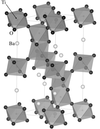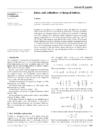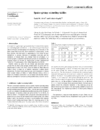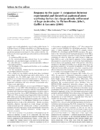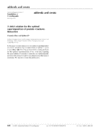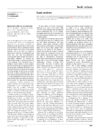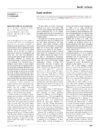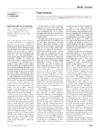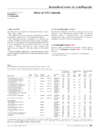issue contents
November 2004 issue

Cover illustration: Diffuse scattering about the 002 reflection of an AlAs/GaAs superlattice grown on an oriented GaAs substrate. The in-plane and out-of plane components of the momentum transfer vector are oriented horizontally and vertically, respectively. The observed features are explained on the basis of the distorted-wave Born approximation. See Chernov et al. [Acta Cryst. (2003), A59, 551-559].
research papers
 access
access

short communications
letters to the editor

addenda and errata

book reviews

books received



international union of crystallography



 journal menu
journal menu










